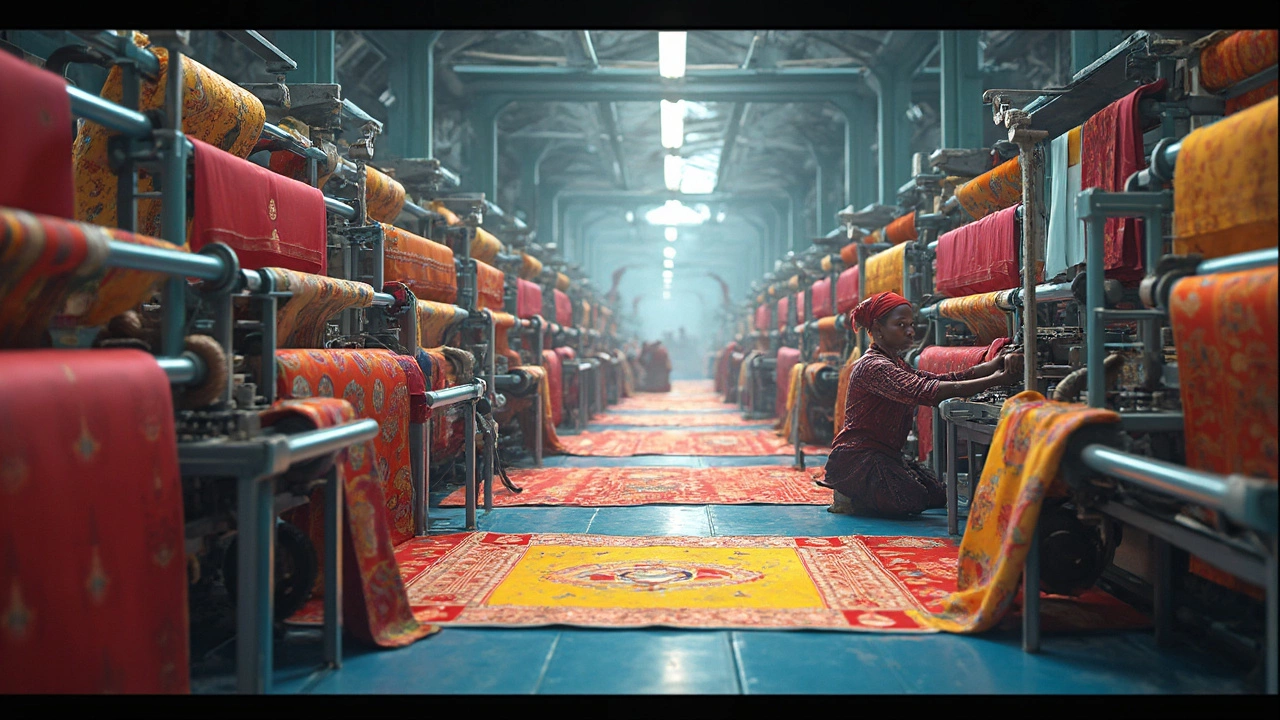- Indian Textile Industry Collapse: What Really Happened and What It Means for Manufacturers Apr 23, 2025
- Export Garments from India to USA: 2025 Step‑by‑Step Guide Oct 24, 2025
- Most Profitable Small Scale Manufacturing Business Ideas Apr 6, 2025
- Steel Production: Which US City Takes the Crown? Jun 12, 2025
- Number One Selling Item in Manufacturing: Insights and Ideas Nov 28, 2024
Textile Trends 2024 – The Must‑Know Shifts for Indian Manufacturers
If you’re in the fabric business, 2024 feels like a new chapter. Green fabrics, tech‑driven prints, and bold colors are no longer niche ideas; they’re everyday demands. Below we break down the five biggest changes you’ll see on the shop floor and in retail shelves this year.
1. Sustainability Moves From Trend to Rule
Consumers now ask, “Is this cloth eco?” before they even think about price. Organic cotton, linen blends, and recycled polyester are selling faster than traditional blends. Production houses are cutting water use by up to 30% with closed‑loop dyeing systems. If you haven’t started sourcing certified sustainable yarns, expect orders to drift to competitors who already have the badge.
2. Digital Printing Takes Over
Old‑school screen printing is losing ground to digital printers that can switch designs in minutes. The tech lets factories produce short runs with vibrant gradients without the waste of metal screens. For small designers, this means a lower entry barrier – they can print a 200‑piece collection without huge setup costs. Investing in a high‑resolution flat‑bed printer can boost your margin by up to 15%.
Beyond looks, digital prints are more durable. UV‑cured inks resist fading, which is a big selling point for outdoor textiles and sportswear. If you’re still relying on batch printing, the shift to digital will feel like a speed bump.
3. Smart Fibers Make Their Mark
Wearable tech isn’t just for gadgets. Conductive yarns that monitor temperature, moisture, or heart rate are slipping into everyday apparel. Indian startups are weaving these fibers into traditional kurtas and modern tees, offering a “feel‑good” factor that resonates with health‑conscious buyers.
What does this mean for manufacturers? You’ll need a partner who can handle both textile and electronic components. Small batch pilot runs are the norm, so start with a limited collection to test market response before scaling.
4. Color Palettes Reflect Global Mood
After years of muted tones, 2024 is all about optimistic colors. Think warm terracotta, bright teal, and deep mustard. These shades echo the post‑pandemic desire for optimism and are showing up in runway shows and home décor alike.
Designers are pairing these colors with natural textures to create a balanced look. If your dye house can match these shades accurately, you’ll get a faster approval cycle from buyers who now demand exact color matches across batches.
5. Local Sourcing Gains Momentum
Supply chain hiccups over the past few years have pushed brands to source more locally. Indian mills are getting more orders for yarns, trims, and finished fabrics to reduce lead times and carbon footprints.
For manufacturers, this is a chance to strengthen relationships with regional growers and weavers. A reliable local partner can shave weeks off delivery schedules and open doors to “Made in India” branding that resonates with both domestic and export markets.
To sum up, 2024 is a year where eco‑mindset, tech integration, vibrant hues, and local networks intersect. Align your production line with these trends, and you’ll stay ahead of buyers who are hungry for fresh, responsible, and innovative textiles. Ready to upgrade your fabrics? Start by auditing your material sources, adding a digital printer to your shop floor, and testing a small batch of smart‑fiber apparel. The market won’t wait, but the right moves can put you in the driver’s seat.
Textile Industry Outlook in India for 2024: Key Trends and Insights
- Aarav Sekhar
- Feb 12, 2025
The textile industry in India is gearing up for significant changes in 2024, driven by technological advances and sustainable practices. With both challenges and opportunities on the horizon, manufacturers are investing in innovation to boost productivity. While global demand fluctuations pose uncertainty, India's strong domestic market offers a buffer. Government initiatives continue to play a vital role in supporting industry growth.
